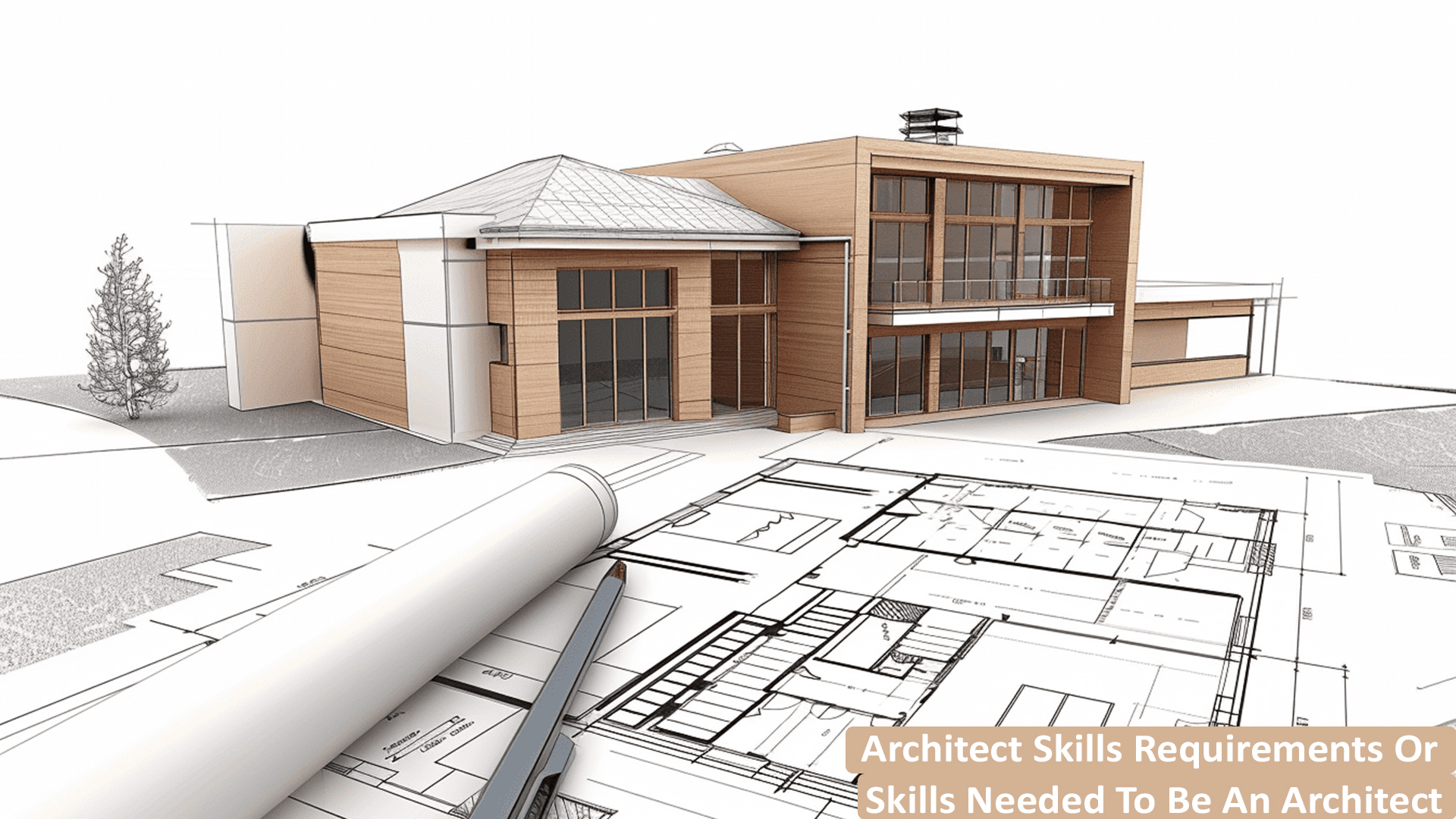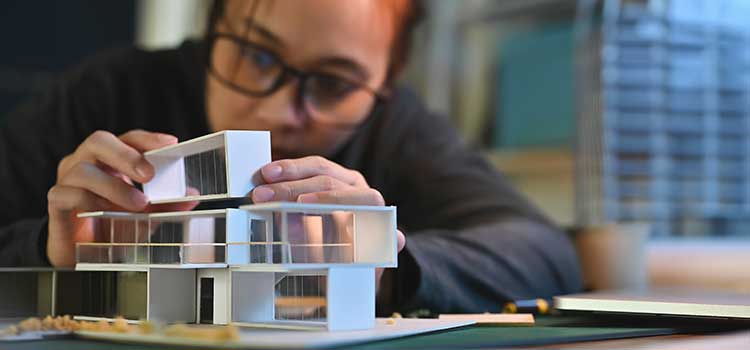Recognizing the Diverse Occupation Paths Available for Aspiring Architect
As an aspiring Architect, you have a globe of career courses waiting for you. Whether you're drawn to standard design or the subtleties of sustainable layout, there's a specific niche that aligns with your rate of interests.
Conventional Design: Designing Structures and Structures
Conventional architecture concentrates on making structures and frameworks that blend performance with aesthetic appeal. Your styles can show social heritage, showcasing local traditions while meeting contemporary demands.
You'll develop skills in drafting, model-making, and website evaluation, permitting you to visualize and interact your ideas effectively. Engaging with clients, you'll need to recognize their vision and translate it into practical styles.
Furthermore, building codes and sustainability methods are important in your work, guaranteeing your structures are risk-free and ecologically pleasant. As you grow in your career, you'll find possibilities in property, commercial, or perhaps reconstruction tasks, each offering distinct obstacles. Accepting conventional style leads the way for a meeting job that pays homage to the past while shaping the future.
Urban Planning: Forming Areas and Public Spaces
As an ambitious Architect, you can play a necessary function as a city planner, transforming exactly how areas function and engage. By employing community engagement strategies, you'll ensure that homeowners have a voice fit their atmosphere. And also, incorporating sustainable design concepts will assist develop areas that not just satisfy today's demands yet also safeguard the future.
Duty of Urban Planners
While several may believe of architects as the sole visionaries behind buildings, urban organizers play a necessary function in forming the more comprehensive landscape of communities and public rooms. By teaming up with various stakeholders, you'll aid design parks, transportation systems, and residential areas that promote social communication and access. Your expertise in spatial layout and neighborhood dynamics allows you to picture future development while preserving cultural heritage.
Neighborhood Engagement Approaches
Reliable community interaction methods are vital for urban organizers to ensure that the voices of citizens are listened to and valued in the preparation procedure. To cultivate meaningful dialogue, you should focus on open discussion forums and workshops where community members can share their ideas and issues. By actively including and paying attention responses, you'll develop rooms that show the area's demands, inevitably leading to even more lasting and effective city atmospheres.
Lasting Style Principles
When developing urban rooms, including sustainable layout concepts is important for creating atmospheres that flourish both ecologically and socially. Think about integrating environment-friendly areas, like yards and parks, to improve biodiversity and improve air top quality.
Creating with water preservation in mind is additionally key-- consider rain gardens and absorptive surfaces to take care of stormwater. Entailing area members during the preparation process warranties that the spaces you develop meet their demands and encourage social communication. By embracing these concepts, you'll add to dynamic, lasting urban landscapes that profit everyone.

Landscape Style: Developing Lasting Outside Environments
As you discover landscape design, you'll discover essential layout concepts that develop functional and lovely outdoor areas. Sustainable methods play a crucial function in making sure these environments prosper while minimizing ecological impact. And also, you'll find a selection of profession opportunities that enable you to make a genuine difference in just how individuals communicate with nature.
Layout Principles in Landscape
Understanding style principles in landscape design is necessary for developing sustainable outside atmospheres that balance with nature. You'll need to contemplate elements like percentage, scale, and balance to ensure your styles feel cohesive and inviting. In addition, pay focus to seasonal adjustments, creating with products that enhance the surroundings year-round.
Sustainable Practices Overview
Sustainable practices in landscape architecture not just concentrate on aesthetic appeals but also focus on environmental health and resource conservation. By incorporating native plants, you enhance biodiversity and lower the requirement for chemical fertilizers and chemicals. Executing efficient watering systems helps preserve water and lessens runoff, protecting neighboring communities. You can design rooms that promote dirt health and wellness, such as using natural materials and exercising permaculture concepts. In addition, including eco-friendly framework, like rain gardens and permeable sidewalks, aids in stormwater monitoring and reduces metropolitan warm. When you produce outdoor environments with sustainability in mind, you add to a much healthier planet and supply spaces that promote area connection. Inevitably, these practices ensure your layouts profit both people and the setting for years to find.
Occupation Opportunities Expedition
With a solid foundation in lasting methods, landscape architecture offers a selection of job paths that allow you to make a significant impact on the setting. Urban organizers frequently collaborate with landscape engineers to create environment-friendly spaces in urban settings, improving city livability. If you're enthusiastic about education, consider becoming a landscape architecture teacher, inspiring future generations.
Lasting Design: Focusing on Eco-Friendly Practices
As you explore your occupation in design, embracing environment-friendly techniques can establish you apart in an affordable area. Sustainable layout concentrates on producing structures that reduce ecological impact while improving owner wellness. By including go to this web-site sustainable products, energy-efficient systems, and lasting building techniques, you'll add to a greener future.
Beginning by acquiring expertise of green accreditations like LEED or BREEAM, which can strengthen your credentials. Consider just how natural light, ventilation, and thermal effectiveness can optimize layout. Team up with engineers and ecological specialists to innovate options that decrease waste and save sources.
Do not neglect the importance of community participation-- appealing neighborhood stakeholders can motivate designs that balance with the atmosphere. As customers progressively focus on sustainability, your proficiency in environment-friendly techniques will certainly not just bring in tasks yet additionally accomplish your enthusiasm for responsible architecture. Embrace this important facet of the profession, and enjoy your occupation thrive.
Historic Preservation: Safeguarding and Restoring Social Heritage
While you commence on your building journey, think about the important role of historic conservation in keeping our social heritage. This field focuses on the protection and restoration of significant structures, websites, and structures that tell the stories of our past. By participating in historical conservation, you'll help guard the building tradition that shapes area identification.
As a historical preservation Architect, you'll examine historical significance and assess the problem of frameworks. You'll function very closely with chroniclers and conservationists to assure authentic repair techniques are used. This profession course allows you to blend imagination with study, enabling you to make services that respect original materials and workmanship.
Your work not just contributes to sustainability by reusing existing structures yet likewise cultivates a sense of pride within areas. Accepting this course will assist you come to be a guardian of history, protecting the tales and appearances that enhance our lives.
Inside Style: Enhancing Indoor Spaces
Historic preservation and indoor design both share a dedication to boosting the built atmosphere, yet they concentrate on different aspects. While historic conservation stresses maintaining a structure's historical and cultural worth, indoor style zeroes in on optimizing indoor areas for capability and aesthetics.
As an aspiring Architect, you'll locate that interior style enables you to blend imagination with technical abilities. You'll create rooms that not just look excellent yet additionally advertise convenience and performance. This area entails understanding how light, color, and materials interact within a space, affecting mood and use.
You'll function on numerous tasks, from household homes to business workplaces, making certain that each setting fulfills the demands of its passengers. By focusing on individual experience, you can transform interiors right into motivating and useful spaces, making a considerable effect on how people connect with their environments. Accept the chance to enhance indoor additional info atmospheres and shape the way individuals work and live.
Industrial Style: Merging Functionality With Visual Appeals
Industrial layout plays an essential duty in developing products that perfectly mix visual appeals with functionality, making certain that what you use day-to-day is not only aesthetically enticing however also practical. As an ambitious Architect, you could immerse on your own in this area, concentrating on developing whatever from furnishings to customer electronics. Your job includes recognizing user demands, products, and producing processes, enabling you to develop innovative services that enhance everyday experiences.
In commercial design, you'll typically collaborate with designers, suppliers, and marketing professionals, guaranteeing that your layouts are not only attractive yet additionally practical. This profession path supplies a dynamic atmosphere where creativity fulfills usefulness, making it a gratifying option for architects interested in shaping the products of tomorrow.
Often Asked Questions
What Educational Credentials Do I Required to End Up Being a Designer?
To come to be an architect, you'll require a specialist degree in architecture, typically a Bachelor's or Master's. Furthermore, you'll need to finish a teaching fellowship and pass the Architect Registration Examination to exercise lawfully.
Exist Accreditation Requirements for Various Architectural Job Paths?
Yes, there're accreditation needs for different building paths. Architect. You'll require to pass examinations, full internships, and sometimes about his go after specialized training, relying on your selected emphasis, like landscape design, city style, or historical preservation
What Software Program Skills Are Necessary for Architects Today?

How Can I Gain Practical Experience While Researching Architecture?
You can get practical experience by interning at architectural firms, taking part in style competitions, offering for community tasks, or working together with schoolmates on real-world jobs. These chances enhance your abilities and develop important links in the market.
What Work Opportunities Exist Outside Typical Style Firms?
You can discover numerous job opportunities outside standard architecture companies, like urban planning, interior layout, landscape style, building monitoring, real estate development, and even roles in sustainability consulting. Each deals unique difficulties and incentives.
Whether you're attracted to traditional design or the subtleties of lasting design, there's a specific niche that straightens with your interests.When designing urban areas, incorporating sustainable style concepts is crucial for developing settings that prosper both environmentally and socially.As you check out landscape design, you'll uncover essential design concepts that produce functional and stunning exterior rooms.Recognizing layout principles in landscape architecture is important for producing sustainable outside atmospheres that balance with nature.In industrial style, you'll frequently work together with marketers, manufacturers, and designers, making sure that your designs are not just gorgeous yet likewise feasible.